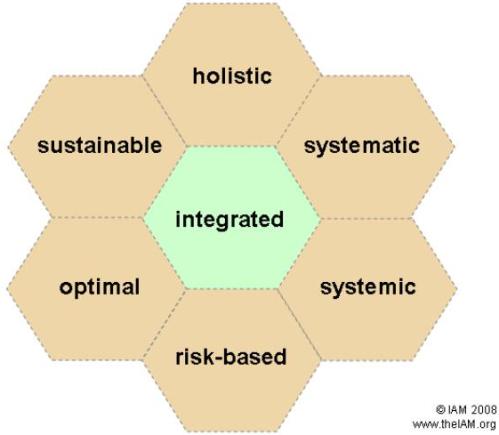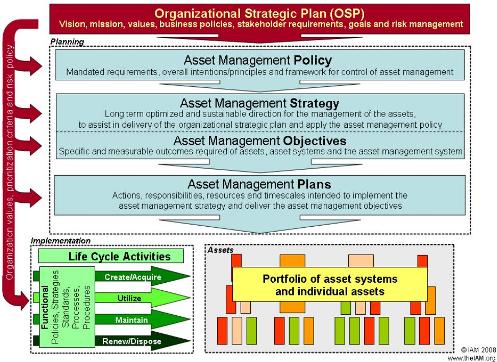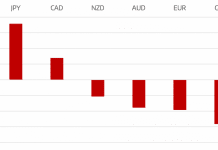In the fast-paced business world, where things come from high to low in a second, you need to take some concrete steps to manage your businesses and asset management properly. Wrong decisions could push you back and right decisions can give you a lead over your competitors.
You need to have a proper plan and strategy in place to cope with different situations. You also need a mechanism to implement those plans. Here is the first of our Guide to Asset Management series that will help you out.
Asset Management
An asset is an item or an entity that has value to an organization. Asset management is the science of making the right decision. A system controls the asset in the best way possible. All the processes such as operating, maintaining, upgrading and disposing of assets come under the umbrella of asset management.
There are specific characteristics of asset management type, introduced by the Institute of Asset Management, that distinguishes the quality of asset management performance.
Asset Managers
The main goal of asset management is to make the best use of resources. As such, asset managers are individuals in a company who offer to manage asset on behalf of other companies. They have to minimize costs and increase efficiency in order to boost profits.
To do so, asset managers need to keep an eye of many factors such as fluctuating market conditions. They also devise strategies on how to make the best use of the asset, which could benefit the organization. Managing cost and risks are thus the duties of asset managers.
As seen from the below diagrams, there are three profiles in Organisational Strategic Plan within the context of asset management. The Blue area shows the hierarchy of logical steps: from Policy-Strategy-Objectives to Plans. These steps then lead to the Green Area Stage or Implementation Stage. And the last one is the Red Area on the left that represents (1) vital business value; (2) prioritization criteria and (3) corporate risk appetite. These all aspects should be taken into consideration by asset manager with the last stage to be incorporated into strategic and implementation activities on a regular basis.
Source: The Institute of Asset Management
Key Elements of Asset Management
Some important elements of asset management are:
- A framework or policy should be in place to facilitate asset management decision making.
- A clear plan
- Understanding how things change in asset management
- Knowing long term funding requirements
- Proper allocation of funds
- Keeping an eye on where money is spent.
Asset Management Strategies
Asset management strategy is the strategy for implementing plans, processes and practices within the company. It covers every aspect from creation and maintenance, to the replacement and disposal of assets.
The strategy must make sure that the goal is achieved by spending minimum resources. As such, asset management strategies, like entering a private treaty play an important role in the future performance of the asset. A strategy prepared after considering different factors and risks could help you handle an asset in a more effective and efficient manner.
Asset Management Plans
Asset management plans are a part of asset management strategy. It is a plan developed to efficiently manage the organizational assets. Asset management plans combine asset management techniques, both financial and technical. It focuses on the complete lifecycle of the asset and look at the changes that could come. Some of things that are considered before making an effective asset management plan are:
- Other policies, plans and procedures
- Scope
- Classification of assets
- Change in value of assets over lifetime of asset
- Cost estimates
- Future demands
Asset Management Policy
An asset management policy will shed light on how the company is planning to approach asset management. Asset management policy plans and strategies combine to give you the direction you need. As such, they are very important for asset management of an organization.
An asset management policy specifies and/or establishes:
- Key goals
- Provides a service delivery platform
- How asset management works with finance planning
- Defining roles and responsibilities
- Long-term decisions
- Financial implications
- Financing options
- Service levels and accountability of services
All asset management, plans, strategies, activities, processes and policies are linked to each other and cannot work on their own. Auditing and monitoring an asset is very important as the current standing of the asset and asset management policy defines how it needs to be done.
Asset Management Activities
Some of the major responsibilities of asset managers are:
- Calculate and estimate the total cost associated with the asset. The cost of each phase of lifecycle is calculated then all are added to get the total life cycle cost of the asset.
- Perform a requirement analysis for acquiring the asset-by-asset managers before acquiring any asset.
- Develop the policies to assess the conditions and procedure.
- Develop maintenance policies and procedures
Chris Turner is a versatile content writer with a passion for technology, finance, Investing and trading. He writes extensively on the subjects of Trading, Investing, Bitcoin, Forex trading, investing and general finance. He is writing and providing advice, education and encouragement to budding investors and traders, on Hedge Fund and alternative investments and other emerging financial trends. He is a contributor writer for HedgeThink.com and TradersDNA.com.











































